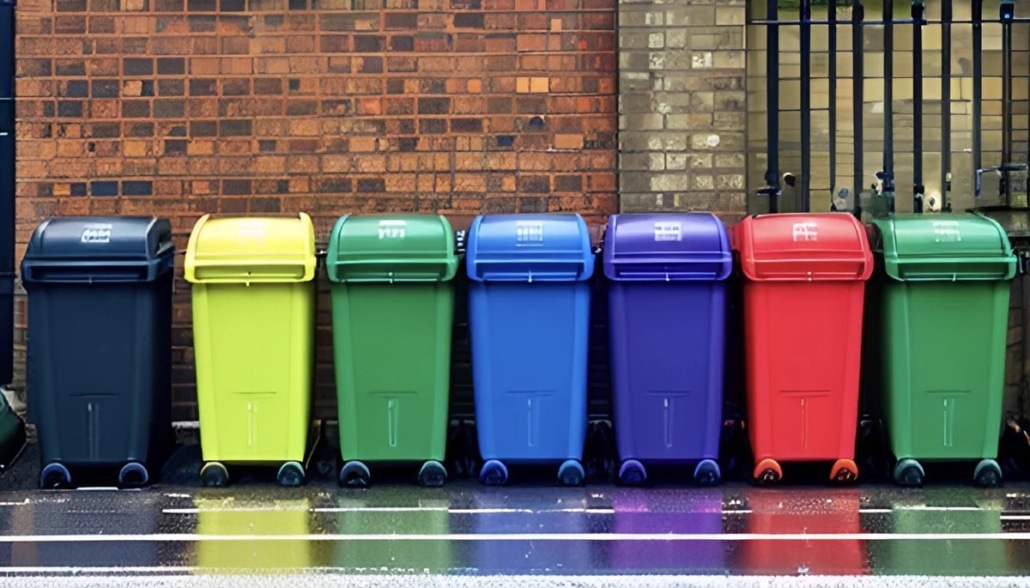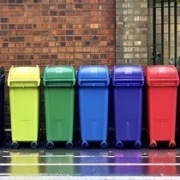Why the Seven-Bin Policy Was Doomed From the Start
In my view, the seven-bin policy – which we should all theoretically support – was never going to hit the mainstream. [If you are not familiar with this news story, check out BBC coverage here.]

And that is because of a simple but remarkably resilient rule: all lists should be three, at least in the theatre of public or mass communication. The seven-bin policy broke the Rule of Three.
In another lifetime, I clearly remember a clever chap at the National Association for Gifted Children explaining why there were seven types of intelligence. I was briefly on the National Executive Board of this important organisation. Whilst I was interested in the list, which was based on the work of Harvard Psychologist Howard Gardner, I knew I would never remember all seven categories.
As a BBC and Reuters journalist, I cautiously advised my senior colleague not to try to run through the list during an imminent Radio 4 interview. He was adamant it was essential. On the day, he tried, got as far as number three, and was interrupted with a pointed and unhelpful question. He never got back on track. I pretended I hadn’t heard the interview.
Why do threes work and longer lists work so much less well?
Perhaps because when things come in threes there is both brevity and rhythm. The three can often represent a beginning, a middle and an end, and three of something is so much easier to remember than four, five, six or seven.
Many articles and books have been written about the power of three, and there are many different explanations about why three is so powerful in this context.
My colleague, Eric Dixon, likes to evidence the robustness of the principle by reciting a list of children’s stories that are built around three: Three Billy Goats Gruff, Three Little Pigs, Three Blind Mice, Goldilocks and the Three Bears, etc.
I like religious references such as the Holy Trinity, the Three Wise Men, Peter denying Jesus three times and the simple: Holy, Holy, Holy. I am told that three is also important in the Koran and in Jewish mysticism. All religions are – among many other things – about marketing a set of ideas.
But my personal favoured explanation for the power of three is one based on neuroscience. It suggests that the human brain is, above all, a ‘pattern recognition machine’ and three is the minimum number you need to create a pattern. Surely it is clear that even a simple ‘three’ – morning, noon and night; breakfast lunch and dinner; an Englishman, an Irishman and a Scotsman, for example– will provide a nice little dopamine hit!
Whatever the alchemy, the Rule of Three is easily observable in everyday life and you ignore it at your peril.
Whilst seven bins would make recycling much cheaper, few households were ever going to work with seven bins. Three is the limit.
Now if you wanted to get crafty you could have:
- 3 bins
- 3 things that should never go in a household bin but should be taken elsewhere (compost heap, charity shop, fabric recycling collection point, for example)
- Top 3 ways to reduce, reuse and recycle
But that is 9 things on the list I hear you say! And it is… but it is also a ‘3 x 3’, another magic formula in the art of teaching and communication.
If you would like help preparing for a media interview call us on 020 7099 2212 or email enquiries@themediacoach.co.uk. All our training is bespoke and we are happy to talk through exactly what you need and suggest ways to teach this quickly, efficiently and memorably.
- Media Savvy Operators Know How to Place a Quote - May 21, 2024
- The Magic of Performance - May 14, 2024
- Our Top Tips: - May 8, 2024




Leave a Reply
Want to join the discussion?Feel free to contribute!